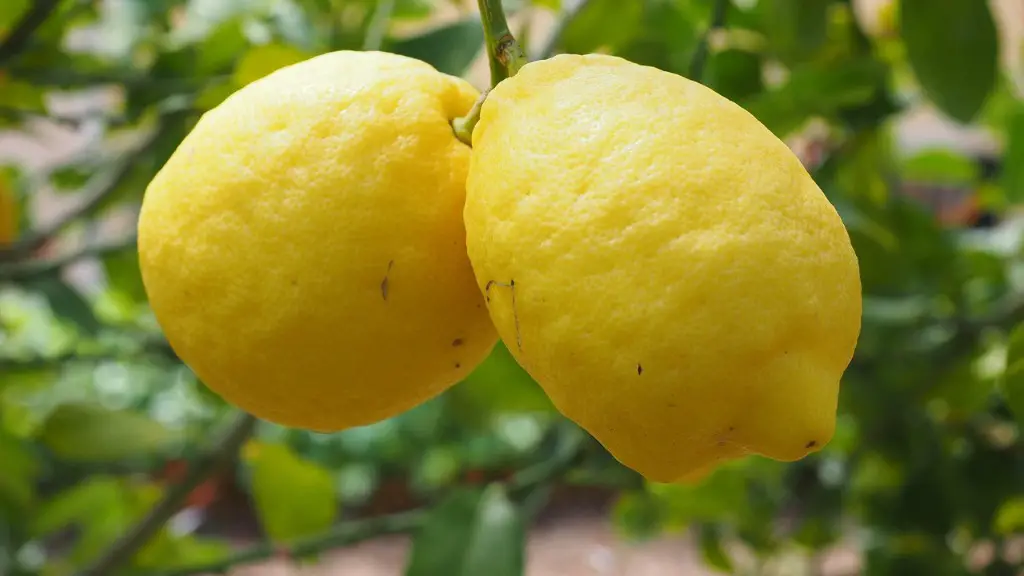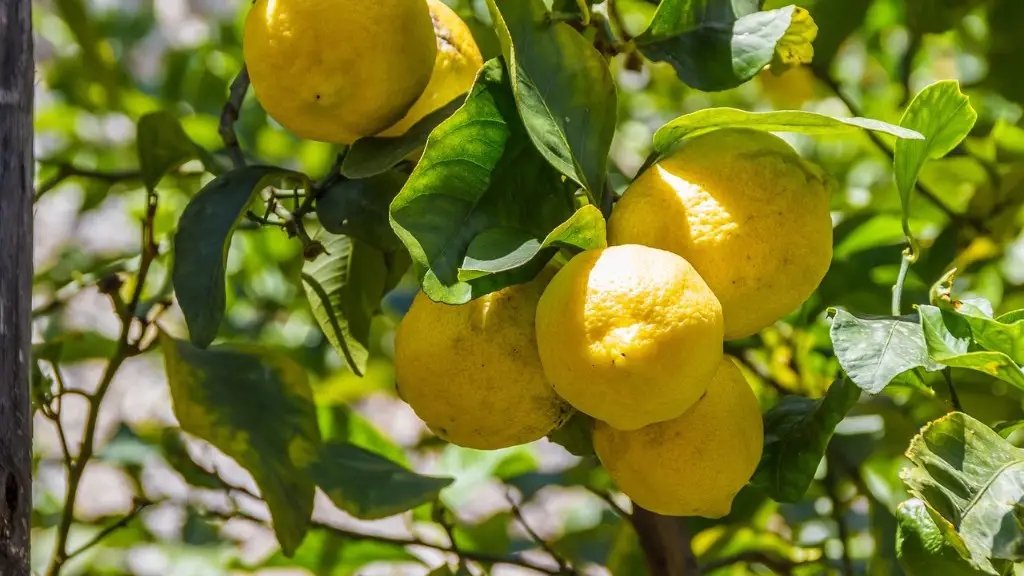We all know the feeling of finding something odd on an otherwise ordinary-looking plant. The presence of sap on a lemon tree can be particularly perplexing and disconcerting for many gardeners. What is sap, why is it on my lemon tree, and what is causing it? This article will explore the possibilities behind this interesting phenomenon.
To begin, it can be very helpful to understand what sap is. Sap is a variety of liquids that many plants produce and use to feed themselves and grow in the right environment. This sap is often made up of water, sugars, minerals and hormones that are blended together to form a nutritious solution that helps the plant survive. Sap can have different consistencies, textures and even colours, depending on the plant.
Now that we understand sap, we can delve further into why it might appear on your lemon tree. There are two primary causes for sap appearing on a lemon tree’s leaves or fruit. The first is a disease or pest infestation that may be present in the tree. These include infections fromviruses, fungi or bacteria as well as insect infestations and sap-sucking bugs. If a tree is infected by any of these, it can cause the tree to produce excess sap and ooze out onto its leaves and fruit.
The second possible cause of sap on a lemon tree is environmental. If the climate around the tree isn’t ideal, or if there is an excess of either water or sunlight, this can put pressure on the tree to react by producing sap. Depriving or overfeeding the tree can also trigger sap production in order to compensate for the conditions. Another possible cause is if the tree has been recently pruned; the tree may produce sap as a kind of defence against the wound.
Of course, if you’re concerned about the presence of sap, the best approach is to take your tree to an arborist who can inspect it and recommend the best course of action. They may be able to identify the cause of the sap, as well as ways to correct it and maintain the health of the tree. Through treating any infected areas, providing the right sort of care in the climate, or pruning the tree correctly, you can ensure that your lemon tree remains healthy and happy.
Other Sample Causes of Sap on Trees
There are more causes of sap appearing on trees than just lemon trees. Generally speaking, excessive sap on trees is caused by an imbalance in the environment, pests, or diseases. For example, bark disease can cause excessive sap in certain types of trees, like cypress, ash, or maple trees. This is because the disease causes biochemical changes in the tree, and in order to keep the tree balanced, it will produce excessive amounts of sap. Similarly, insect infestations can also trigger sap production, as the tree will secrete sap to keep them away.
Sap Collecting for Use
The presence of sap on a tree is not always considered a negative; in fact, certain trees are tapped specifically for the sap they produce. For example, maple trees are often tapped in North America and Canada in order to collectthe sweet sap they produce, which is then boiled down into maple syrup. The sap is usually collected in the springtime, when the temperature fluctuates between day and night and causes the sap to flow. Similar tapping practices are used by beekeepers to collect the sap of particular trees, which they can use to increase the health and longevity of their bee colonies.
Signs of a Healthy Tree
It is important to keep an eye on your trees and ensure that they remain as healthy as possible. If sap is present on your lemon tree, it is essential to identify the root cause of the problem and take action before it gets any worse. Healthy lemon trees typically do not experience excessive amounts of sap; instead, they should produce generous fruits with small amounts of sap. The leaves of a healthy tree should also be strong and healthy looking. If your tree does not adhere to these descriptions, it may be an indicator of a problem underneath the surface.
The Implications of Sap Presence
Having sap present on a lemon tree can be a double-edged sword; while it can be a sign of something more serious going on with the tree, it can also indicate that the tree is in a healthy state and producing sustenance for itself. As a gardener, it can be helpful to be aware of the implications of sap presence; however, it is also important to be vigilant and take action if the tree is losing its healthiness.
Environmental Factors
The environment in which a tree is situated will have a large effect on sap production and its overall health. Temperature changes, water content, wind and sunlight can all affect the production and presence of sap on a tree, even a lemon tree. Temperature fluxes can cause pressure and the tree may react by secreting sap around its wounds or cracks. Being aware of the climate and its effects on your lemon tree can help you prevent sap from appearing and keep it healthy.
Pest and Disease Identification
Unfortunately, it can sometimes be difficult to determine whether the cause of the sap on your lemon tree is from a pest or disease or from environmental issues. Professional arborists and tree specialists can assess your tree, diagnose the problem and suggest possible remedies that can help alleviate any stress and health concerns the tree may have. Therefore, if you have determined that sap is present on your lemon tree, hiring an expert can shed more light on the issue and help you keep your tree in the best possible condition.


